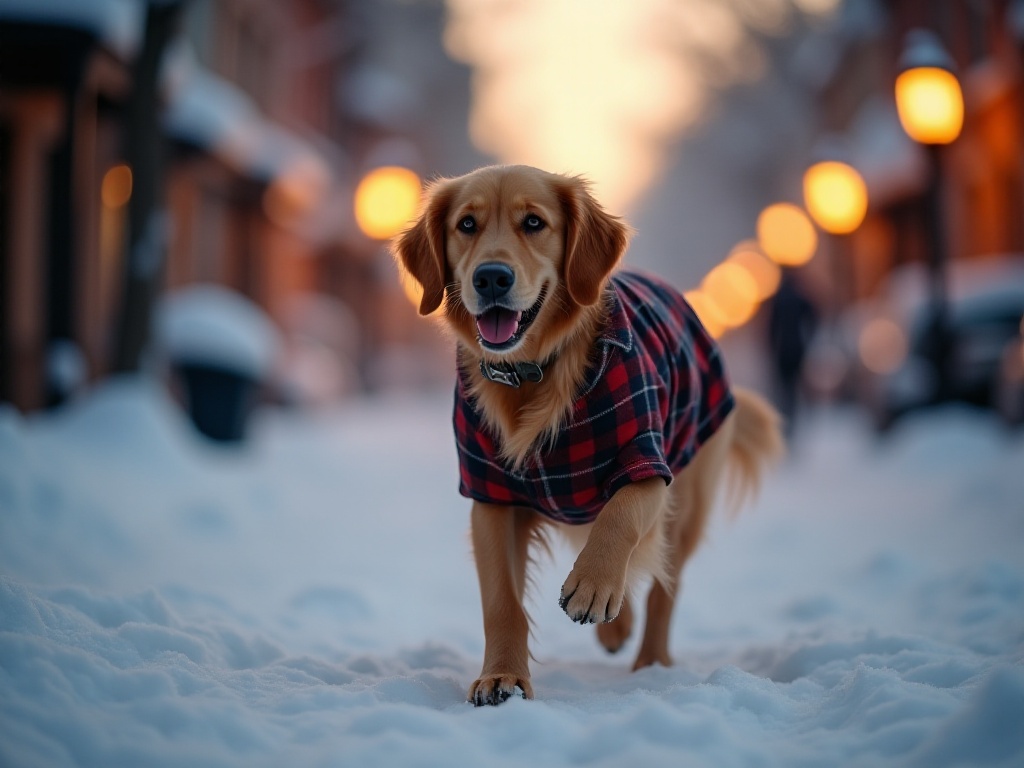Introduction
As a post-95s pet parent, living with my mischievous Golden Retriever every day is both sweet and headache-inducing. I still remember when I first started raising a dog - I was completely overwhelmed. To learn about dog care, I watched every pet care content creator across all platforms. After years of hands-on experience, I can finally consider myself a seasoned pet parent. Today, I'd like to share my accumulated experience with everyone, hoping to help more novice pet parents avoid common pitfalls.
To be honest, having a pet isn't easy. Sometimes just thinking about walking, cleaning up after, bathing, and grooming can feel exhausting. But whenever I see my furry child's big watery eyes and their unconditional trust and dependence on me, all the hardships instantly vanish. However, mastering some practical tips can indeed make our pet-raising life much easier.
Winter Protection
Speaking of winter, I really need to vent about our northern weather. Temperatures below -20°C are tough even for us humans, let alone our furry friends. Although they have fur, their paws and noses are still very susceptible to cold.
An experience from last winter remains vivid in my memory. That morning was particularly cold, and while walking my Golden Retriever, they suddenly stopped moving and lifted their paw, looking at me pitifully. My heart nearly broke, and I quickly carried them home. Later, through research and consulting experienced pet parents, I learned many cold protection tips.
For example, applying Vaseline to the dog's paws before going out. This trick works really well - it not only prevents paw cracking but also helps insulate against the cold. Now I do this care routine before every outing. I've found that besides Vaseline, some specialized pet paw care balms work great too. Though more expensive, they're more effective and don't have that greasy feeling of Vaseline.
Besides paws, dogs' ears are also prone to freezing. I get them to wear a special dog hat that covers their ears. They might not adapt to it at first, but gradually get used to it. Now whenever they see me take out the hat, they actively extend their head for me to put it on - it's incredibly cute.
When it comes to winter warmth, I think the most important thing is preparing a warm and comfortable den for your dog. My Golden's den is semi-enclosed with barriers on three sides, leaving only one entrance, which effectively blocks cold wind. I've laid a thermal pad at the bottom with a soft dog bed on top. In particularly cold weather, I'll add a hot water bottle between the thermal pad and bed, though it needs to be wrapped in a towel to avoid burning the dog.
For stray cats that need to survive outdoors in winter, the volunteers in our community and I have developed many solutions. The most practical is using discarded thermal boxes or foam boxes as cat shelters, lined with hay or old blankets. We wrap the boxes with waterproof fabric to prevent leaks during rain or snow. To keep the shelters warm, we use thermos bottles or juice bottles wrapped in sweaters placed inside. This method has become very popular in our community, with many neighbors joining the effort to help stray cats.
Another important winter issue is exercise. While it's truly too cold for lengthy outdoor activities, dogs still need to meet their exercise needs. My solution is to divide outdoor exercise time into several shorter sessions but increase the frequency. We can also play interactive games indoors, like hiding treats or playing fetch, allowing the dog to exercise without getting cold.

Summer Heat Relief
Summer is equally challenging for our furry friends. You might not know that dogs and cats don't cool down through sweating like humans do - they primarily cool down through panting. Therefore, they're more susceptible to heatstroke in hot weather.
I recently discovered a particularly popular cooling method: freezing chicken broth with fruits and vegetables that dogs like into ice cubes. Note that the chicken broth should be boiled with plain water, without salt or seasonings. For fruits and vegetables, I usually use carrots, watermelon (seeds removed), and apples. Cut these ingredients into small pieces, place them in ice cube trays, pour in the chicken broth, and freeze. When I give my dog one or two cubes, they get as excited as a child.
Another cooling toy my Golden particularly loves is their toys frozen in ice blocks. I put their favorite rubber ball or rope toy in a larger container, fill it with water, and freeze it. When it gets hot, I take it out, and they'll keep licking and biting it, having a great time. This not only helps them cool down but also provides a good interactive game. However, I should remind everyone that while there's no definitive evidence that dogs can get brain freeze, it's better to control the portion of frozen treats for safety and observe your dog's reaction.
Besides these cooling tricks, sun protection is particularly important in summer. Many people might not know that dogs and cats can get sunburned too. This is especially true for pets with short or white fur, as their skin is more susceptible to sunburn. So when walking dogs in summer, it's best to choose early morning or evening when temperatures are lower, and avoid going out at noon. If you must go out when the sun is strong, you can spray some specialized pet sunscreen.
Speaking of summer, another important issue is insect bites. My Golden is particularly attractive to mosquitoes and gets covered in bites every summer. Later, I discovered an especially effective mosquito repellent method: spraying diluted lemongrass essential oil around the dog's bed and activity areas. However, note that the essential oil must be diluted and never sprayed directly on the dog.
[Continued...]


